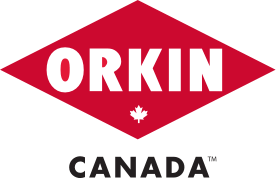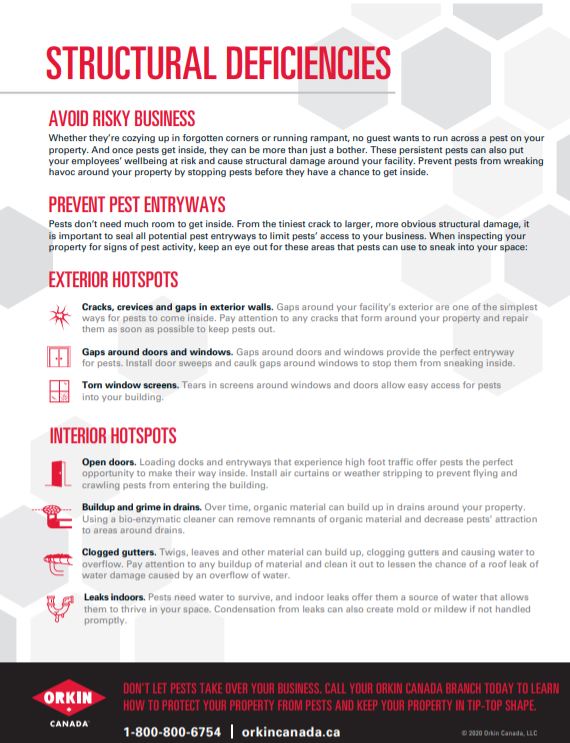What’s one thing that can ruin an otherwise spectacular guest experience? A single pest sighting.
No guest wants to run across pests on your property, and just seeing a rodent or bug may be enough to drive them away from your business for good. What’s more, these unwanted visitors can cause massive amounts of structural damage around your facility—and once they’re in, pests can be tough to get out.
Fortunately, there are a few things you can do stop them in their tracks. After decades in the business, Orkin Canada has learned the exact shortcomings that can put any facility at increased risk for pests. If you’re experiencing any of these pitfalls, it’s crucial to address them quickly in order to preserve your facility’s safety (and profitability).
These can include exterior deficiencies such as:
- Cracks, crevices and gaps in exterior walls
- Gaps around doors and windows
- Torn window screens
Additionally, you’ll want to check for interior deficiencies, including:
- Open doors
- Buildup and grime in drains
- Clogged gutters
- Leaks
Each of the above can result in a torrential invasion of pests in your building, compromising the very fabric of your business and eroding the trust you’ve worked so hard to build with your paying customers.
To learn how you can take steps to put an end to these structural worries, check out our expert tip sheet here.
You may also like
Canada's Top 25 Bed Bug Cities Of 2023
Bed bugs are extremely efficient hitch hikers. They can move easily across a room and climb onto luggage or anything left on a bed in just one night. Learn which cities have made Canada’s top 25 bed buggiest cities.
British Columbia's Top 20 'Rattiest' Cities 2023
As winter approaches, pest control leader Orkin Canada reminds homeowners and business owners to take precautions to help keep rodents out. Cities are ranked by the number of rodent (rat & mice) treatments the company performed from August 1, 2021 through July 31, 2022.
Ontario's Top 25 "Rattiest" Cities 2023
Pest control leader Orkin Canada reminds home owners and business owners to take precautions to help keep rodents out. Cities are ranked by the number of rodent (rat & mice) treatments the company performed from August 1, 2022 through July 31, 2023. This ranking includes both residential and commercial treatments.
Eastern Canada's Top 15 'Rattiest' Cities 2023
As winter approaches, pest control leader Orkin Canada reminds homeowners and business owners to take precautions to help keep rodents out. Cities are ranked by the number of rodent (rat & mice) treatments the company performed from August 1, 2021 through July 31, 2022.
Remove pests from your home, and stop them from coming back
We work hard to listen, understand and assess your unique situation. Request a free, no-obligation estimate today for a customized pest program that fits your needs.
Request a Free Home EstimateRequest a Free Business Consultation


